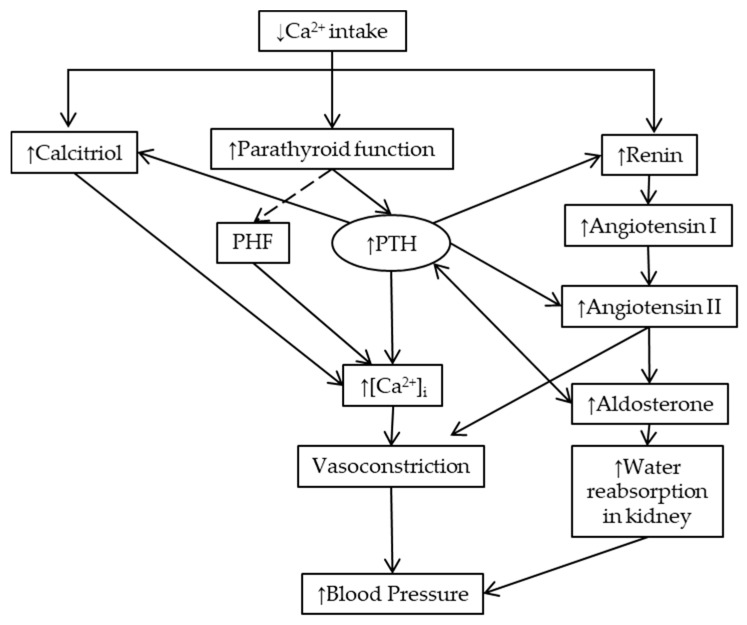Figure 3.
Scheme of the mechanisms involved in the rise of blood pressure due to low calcium intake, namely the link between calciotropic hormones and blood pressure regulators. Low calcium intake: (a) increases calcitriol serum levels, (b) stimulates parathyroid function, and (c) increases renin secretion. Calcitriol may increase cytosolic free calcium concentration ([Ca2+]i) via non-genomic short-term mechanisms. The parathyroid gland secretes parathyroid hormone (PTH) and possibly (dash arrow) the parathyroid hypertensive factor (PHF). Both mediators increase [Ca2+]i, leading to the contraction of the vascular smooth muscle cells (vasoconstriction). Renin release is stimulated both by low extracellular calcium and PTH, activating the renin–angiotensin–aldosterone system (RAAS). In addition, PTH increases angiotensin II and aldosterone synthesis, which also leads to vasoconstriction and increases renal water reabsorption, increasing blood pressure. Aldosterone also increases PTH serum levels (double-headed arrow). See text for further details.

